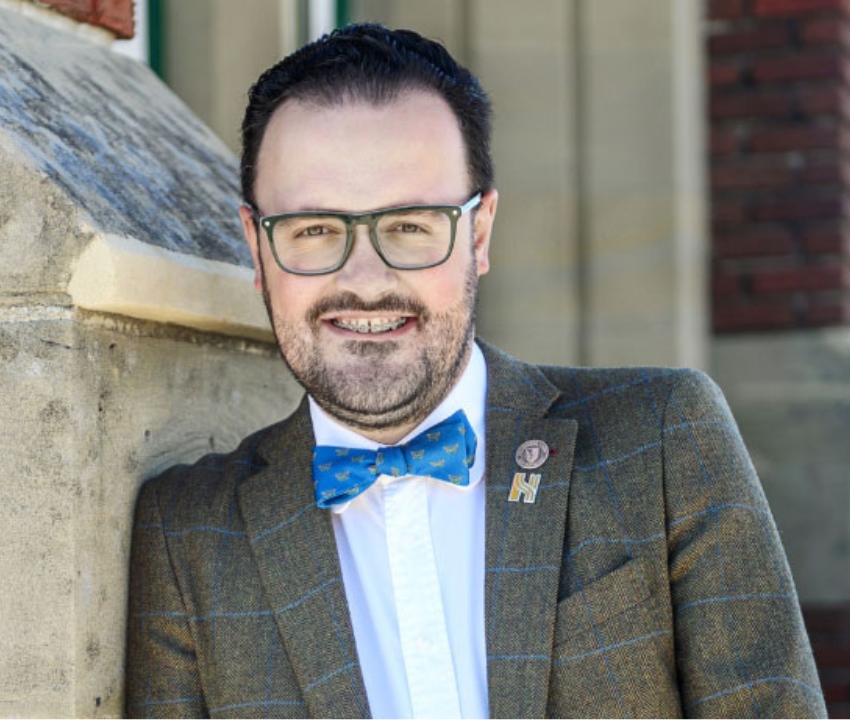What makes something historically significant? Is it that something important happened on a specific date at a specific place? Does the event have to be really old to count?
For SAIT graduate, 2016 Outstanding Young Alumnus and current Heritage Calgary CEO, Josh Traptow, history is so much more than dates.
“History is stories, and it’s people and events. You can’t have history without people,” he says. “Not everything has to be old to be history — a place might be old, but it won’t have history without the people who live there or the stories that happen there.”
Keeping space for the stories of this place
As a charitable Civic Partner of The City of Calgary, Heritage Calgary focuses on the research, education, and preservation of the shared heritage across our city. Traptow has led Heritage Calgary as CEO since 2015. In that time, he has served as an outstanding advocate and educator for the preservation and awareness of Calgary's built, non-built and archeological heritage or history.
In his seven years with Heritage Calgary, Traptow has developed the organization from the bottom up. From no staff and a budget of less than $50,000, he has created a passionate team of heritage advocates and increased their budget to over $650,000 to deliver on their mandate of advising Calgary City Council on heritage and promoting and educating heritage to fellow Calgarians.
The organization’s mission – To embrace and keep space for the stories of this place –has been driven by Traptow’s particular perception of what heritage can mean. To him, heritage and history mean more than just places, dates or buildings — it’s the stories of the people who bring these places to life and make them important for Calgarians today and tomorrow.
“Everyone has a story to tell, whether it’s their family story or their individual story,” he shares. “Those stories shape who we are and where we are going, and it’s important to tell those stories — the good, the bad and the ugly because we can’t learn in the future if we don’t know where we’ve come from.”
Inclusive conversations
Traptow has facilitated a more inclusive conversation around what is worth preserving in Calgary by re-evaluating the narrative around heritage and history. His team’s work through Heritage Calgary has inspired a new mindset around what history means and is, and this lets Calgarians and the communities they represent, see themselves reflected in the broader history of the city.
“One of the values of history is that it’s something that people can relate to and have a personal connection with.” He says. “Whether it’s the house you grew up in, the school you went to or the park you visited, it’s that personal connection and personal story.”
Among the many initiatives he’s led at Heritage Calgary, one of the most significant and long-lasting has been the creation of the Naming, Renaming, Commemoration and Removal (NRCR) handbook. The NRCR handbook was created at the request of City Council as a guiding framework to address the ongoing issues around place and location names.
Through consultation with Calgarians, community members, the City of Calgary and an Indigenous Sharing Circle, Traptow and his team produced a process that is inclusive and reflective of reconciliation and Indigenous history. The NRCR Handbook is available to anyone interested in the process and will serve Calgarians for years to come as the people and communities that make up this city collectively move along our journey of reconciliation.
Shifted narrative
Because of his inspired dedication and leadership with Heritage Calgary, Traptow received the 2023 Calgary Award for Community Achievement in Heritage. When he reflects on the work he and the team at Heritage Calgary have done, he brings it back to the idea of shifting the narrative around heritage and history.
“We’ve really tried to change that narrative, that heritage and history aren’t just old buildings. It’s everything else. It’s cultural heritage — it’s tangible, it’s intangible. It’s the stories.”

Oki, Âba wathtech, Danit'ada, Tawnshi, Hello.
SAIT is located on the traditional territories of the Niitsitapi (Blackfoot) and the people of Treaty 7 which includes the Siksika, the Piikani, the Kainai, the Tsuut’ina and the Îyârhe Nakoda of Bearspaw, Chiniki and Goodstoney.
We are situated in an area the Blackfoot tribes traditionally called Moh’kinsstis, where the Bow River meets the Elbow River. We now call it the city of Calgary, which is also home to the Métis Nation of Alberta.
